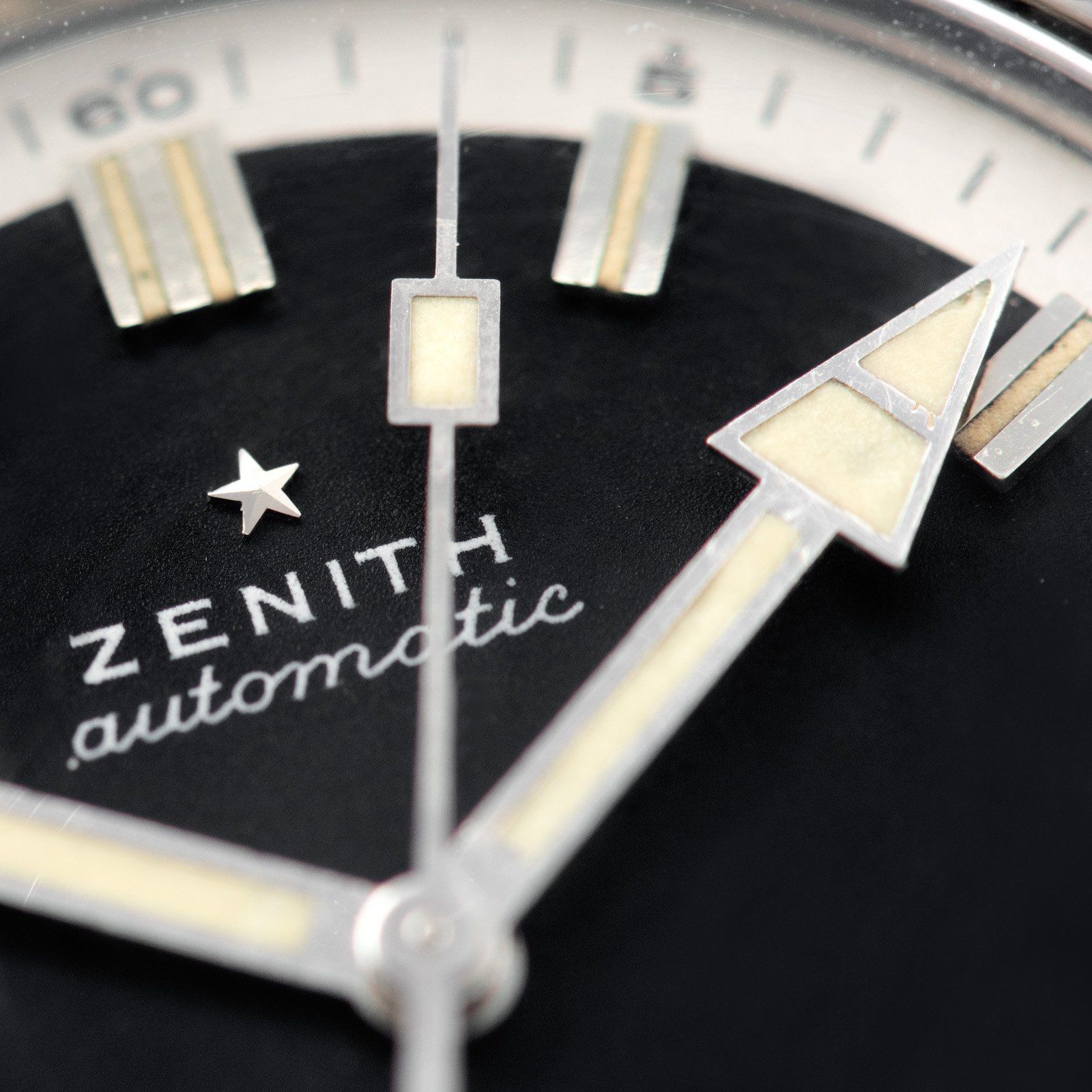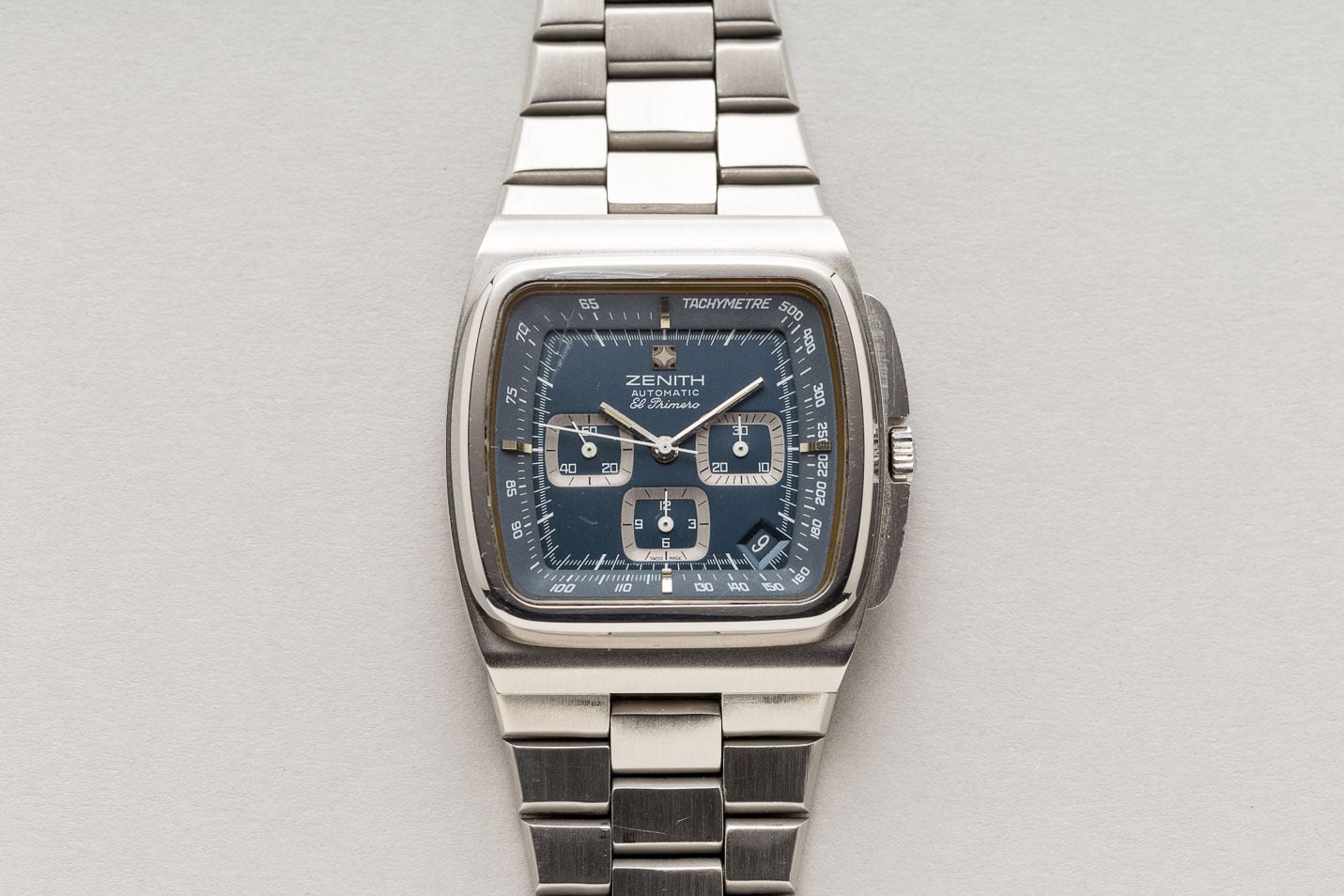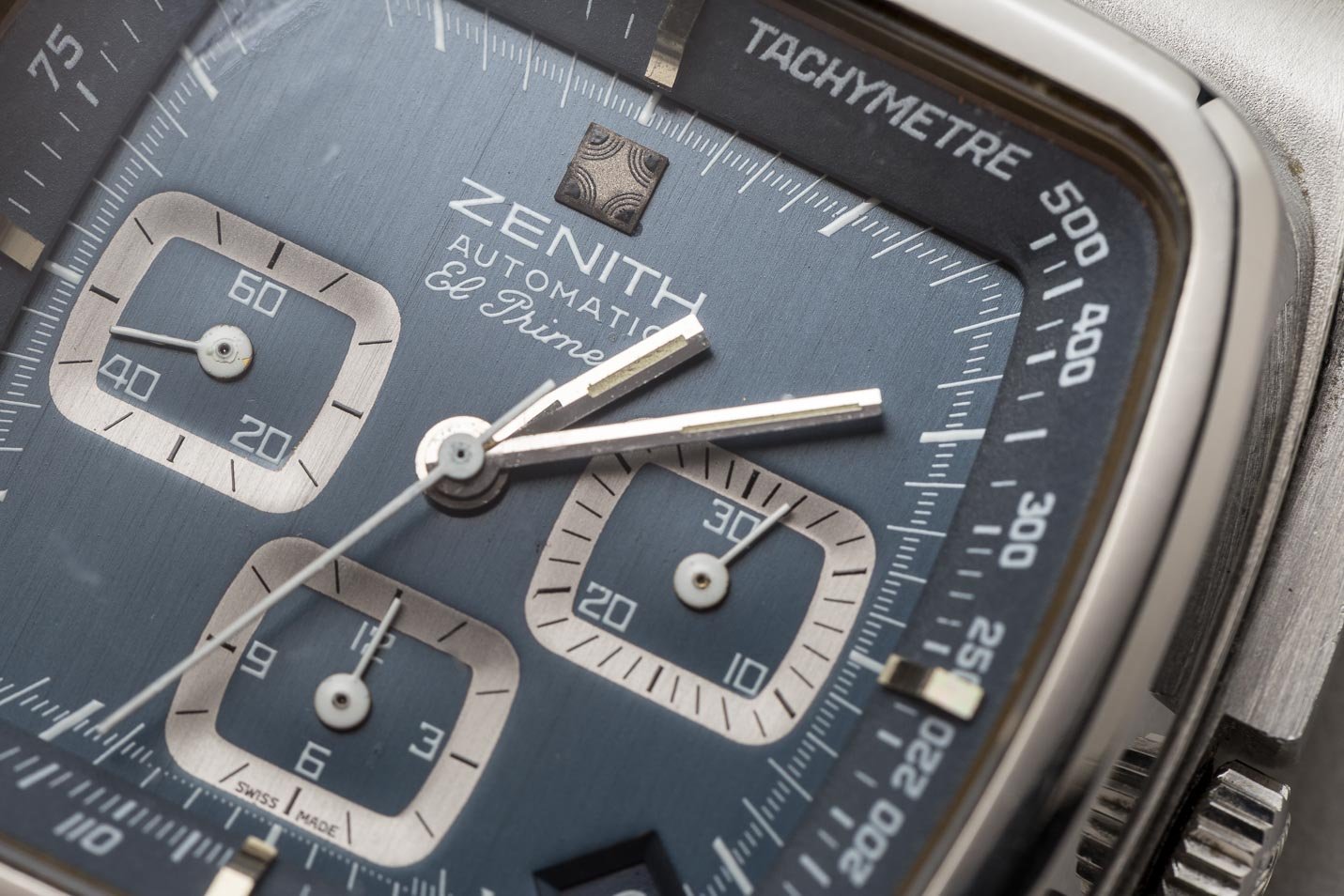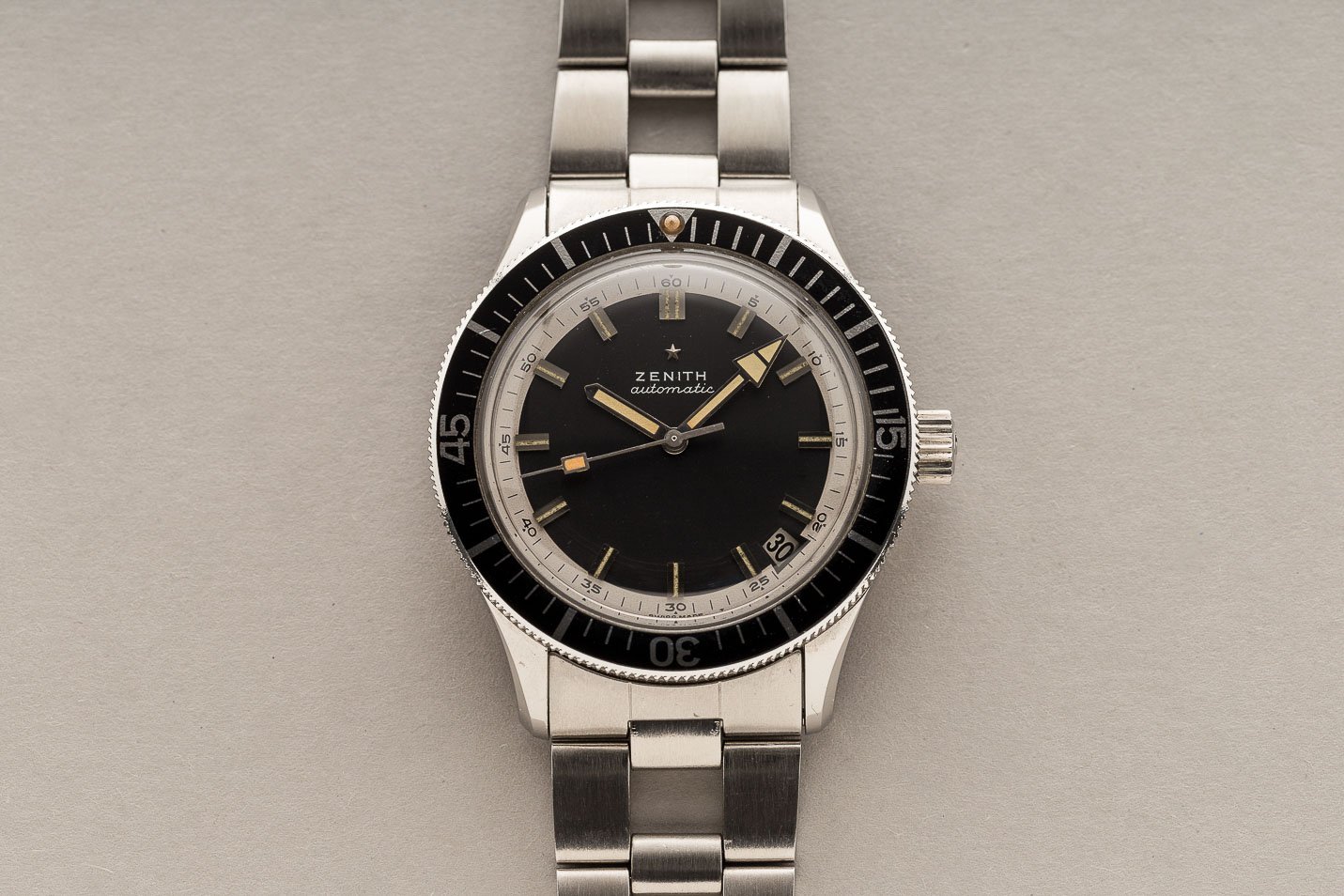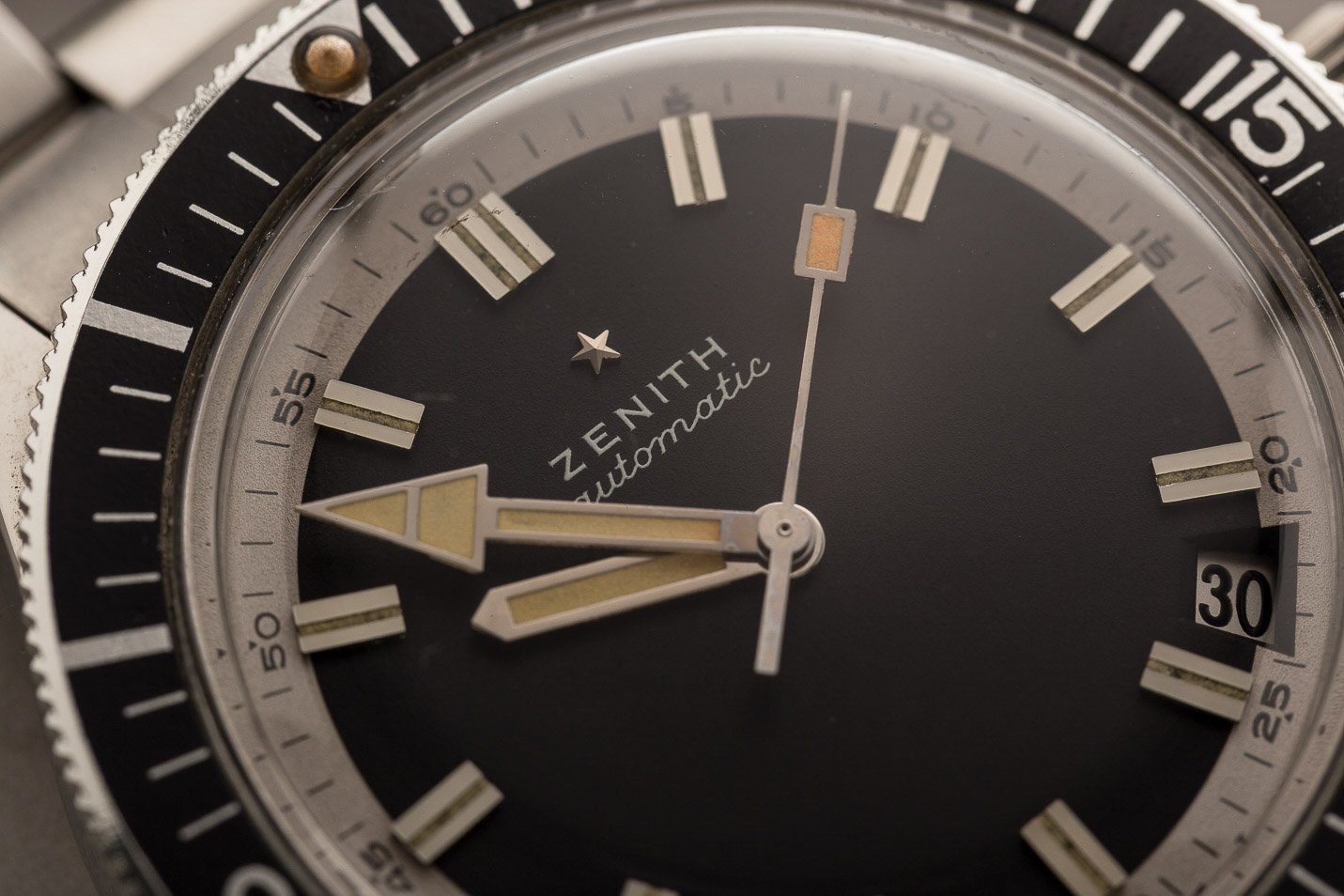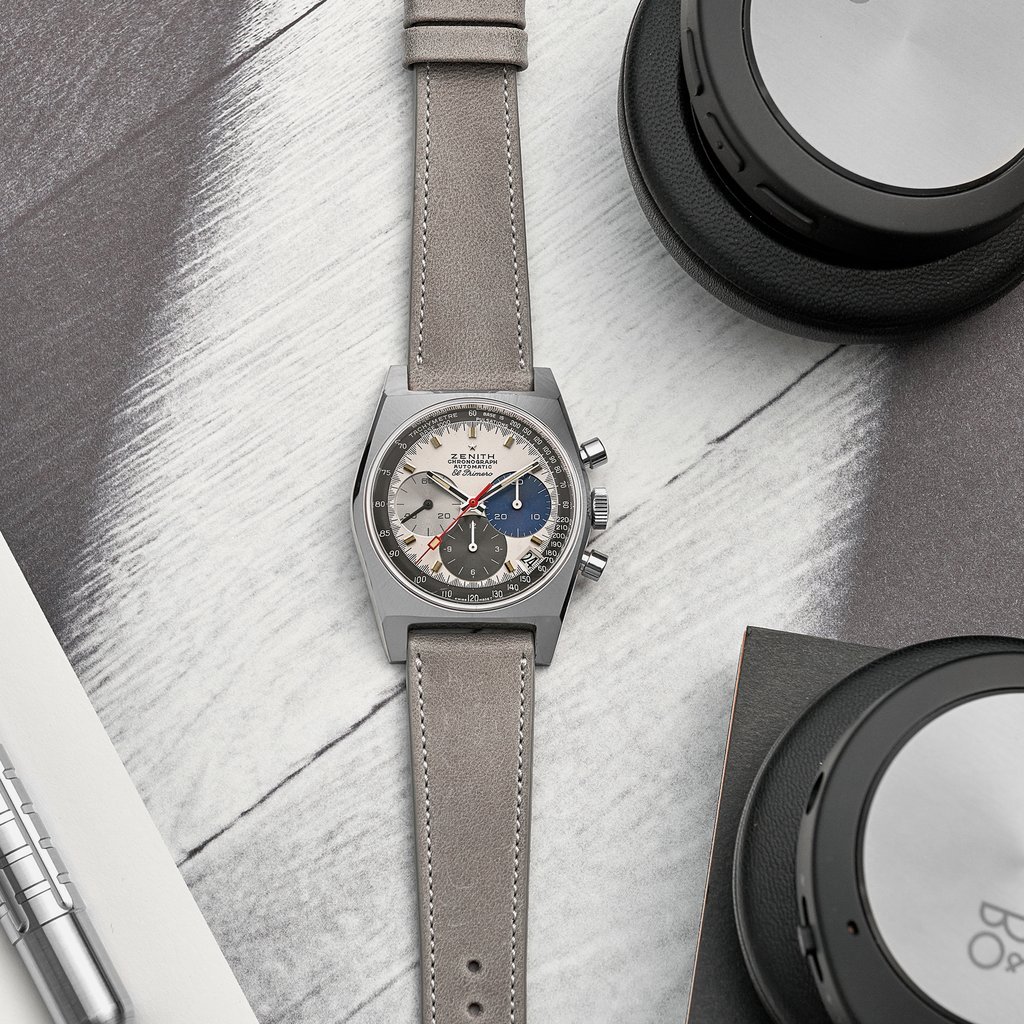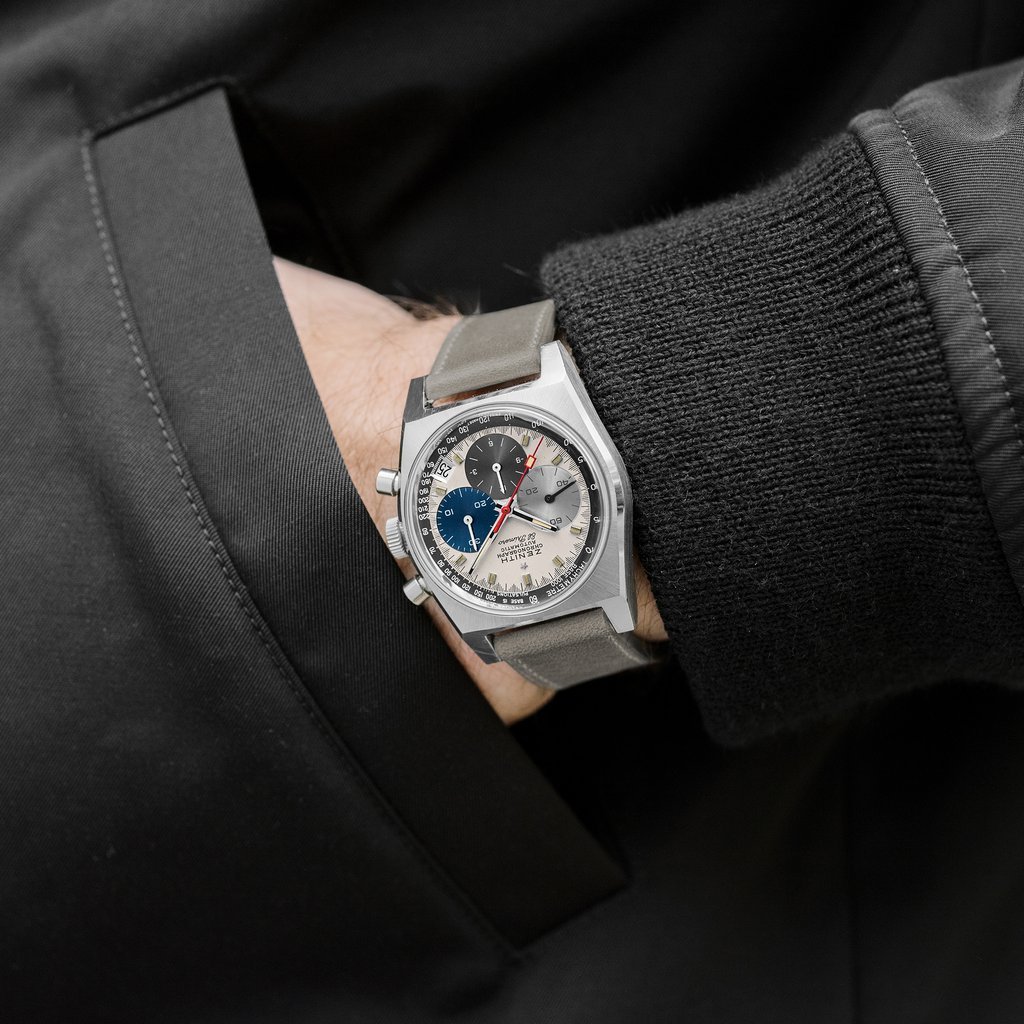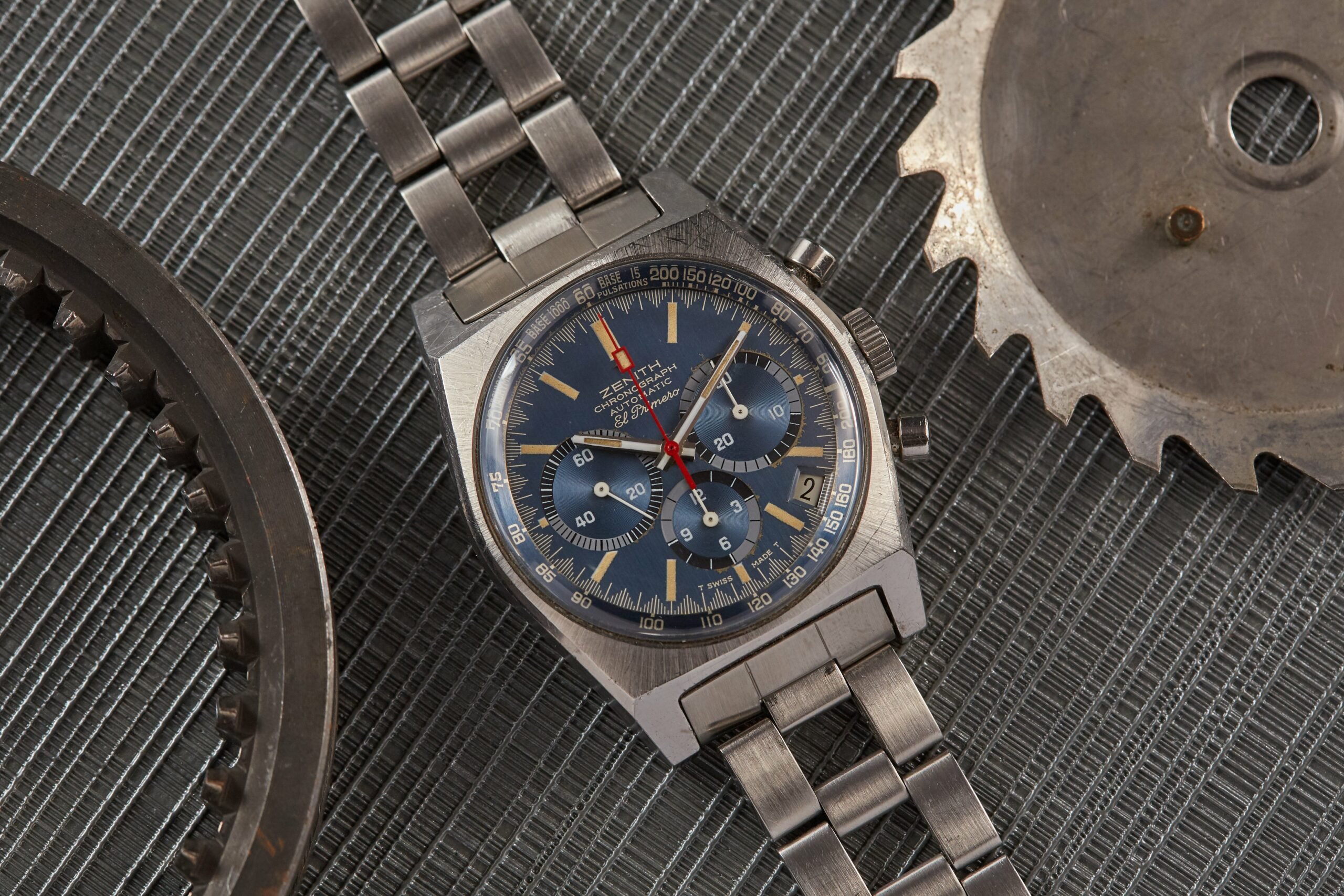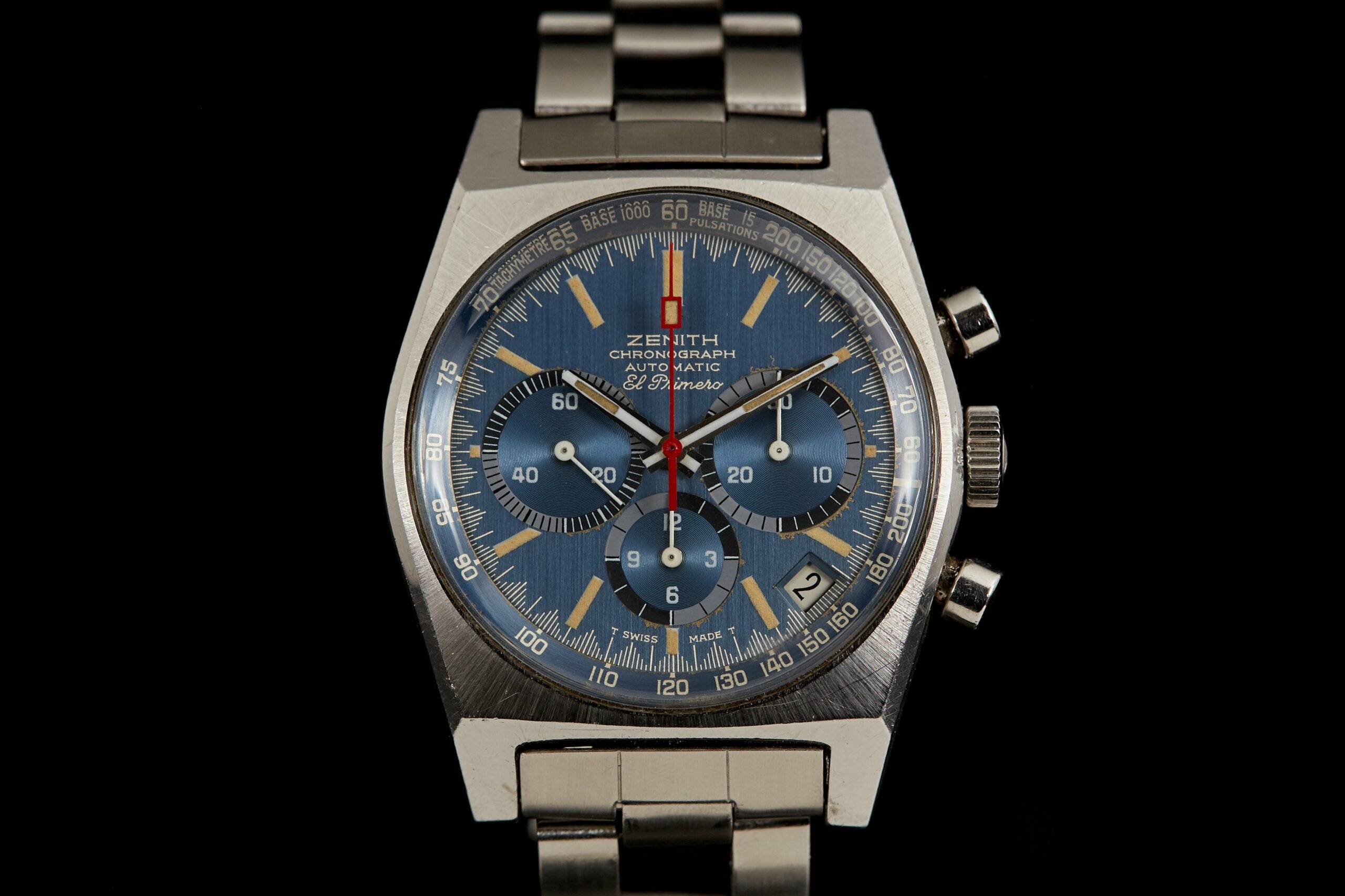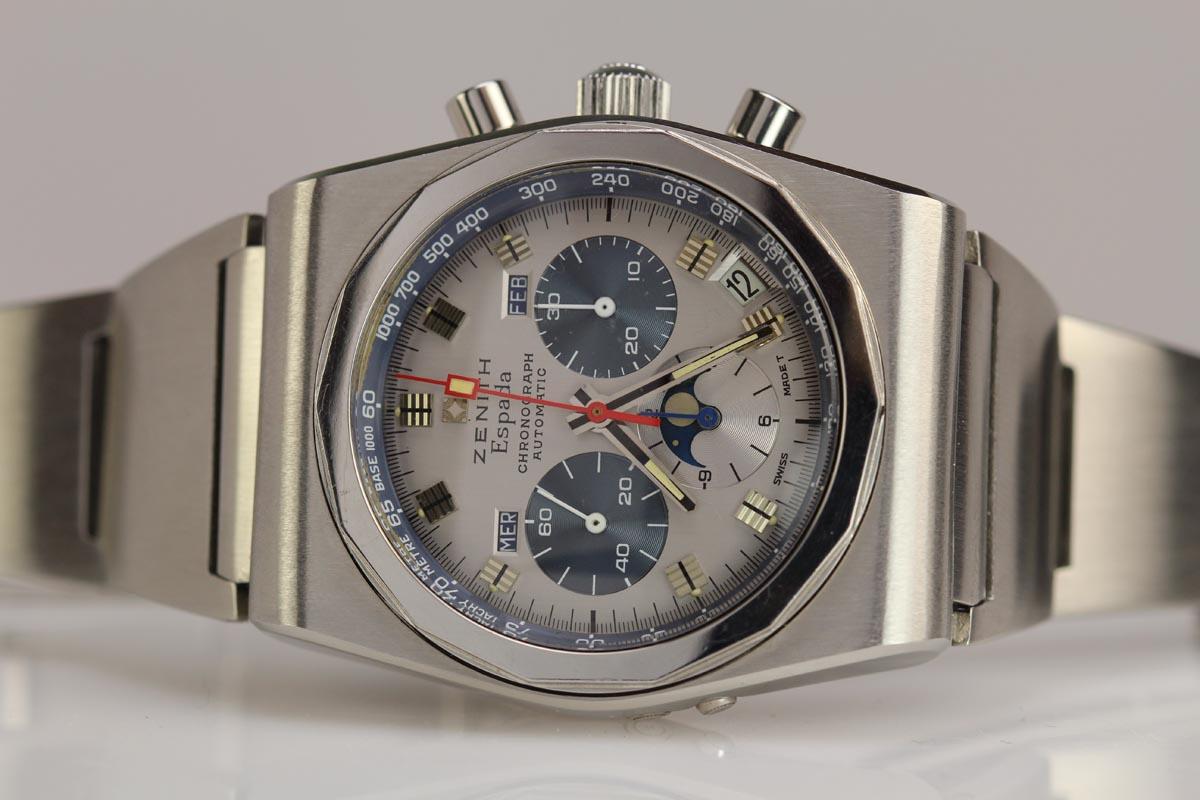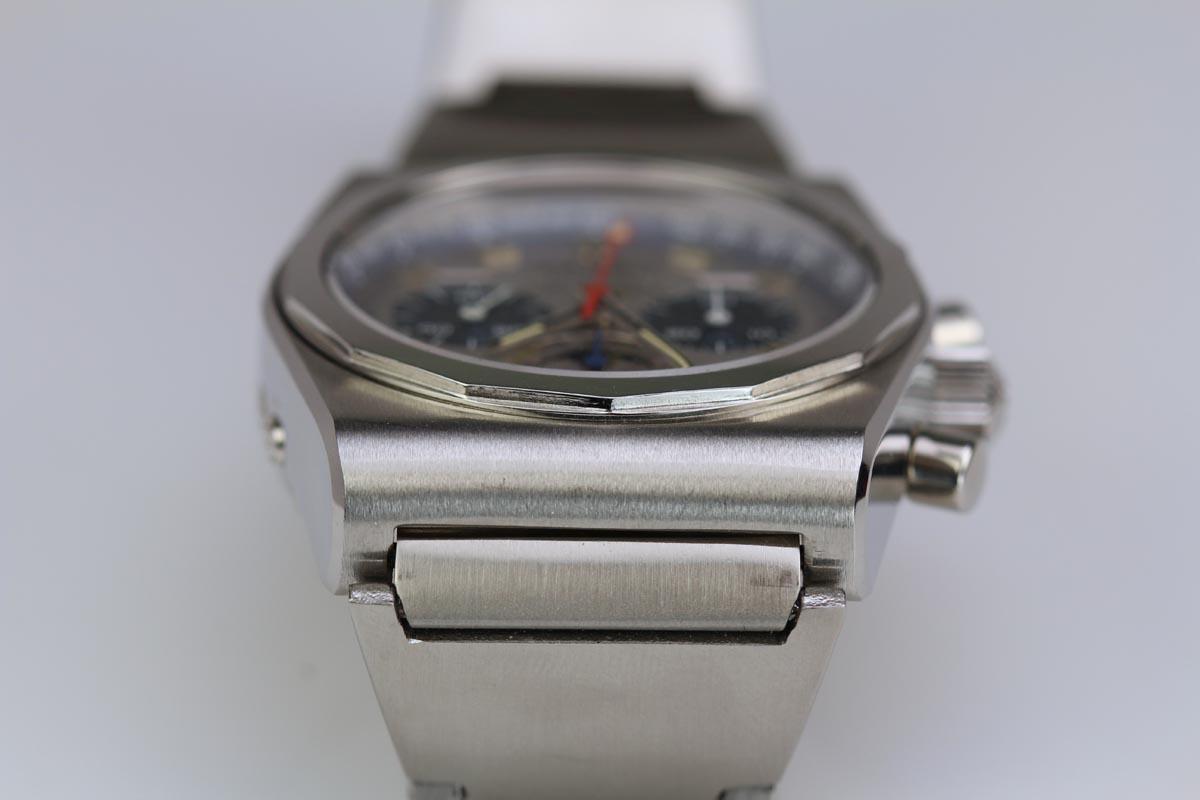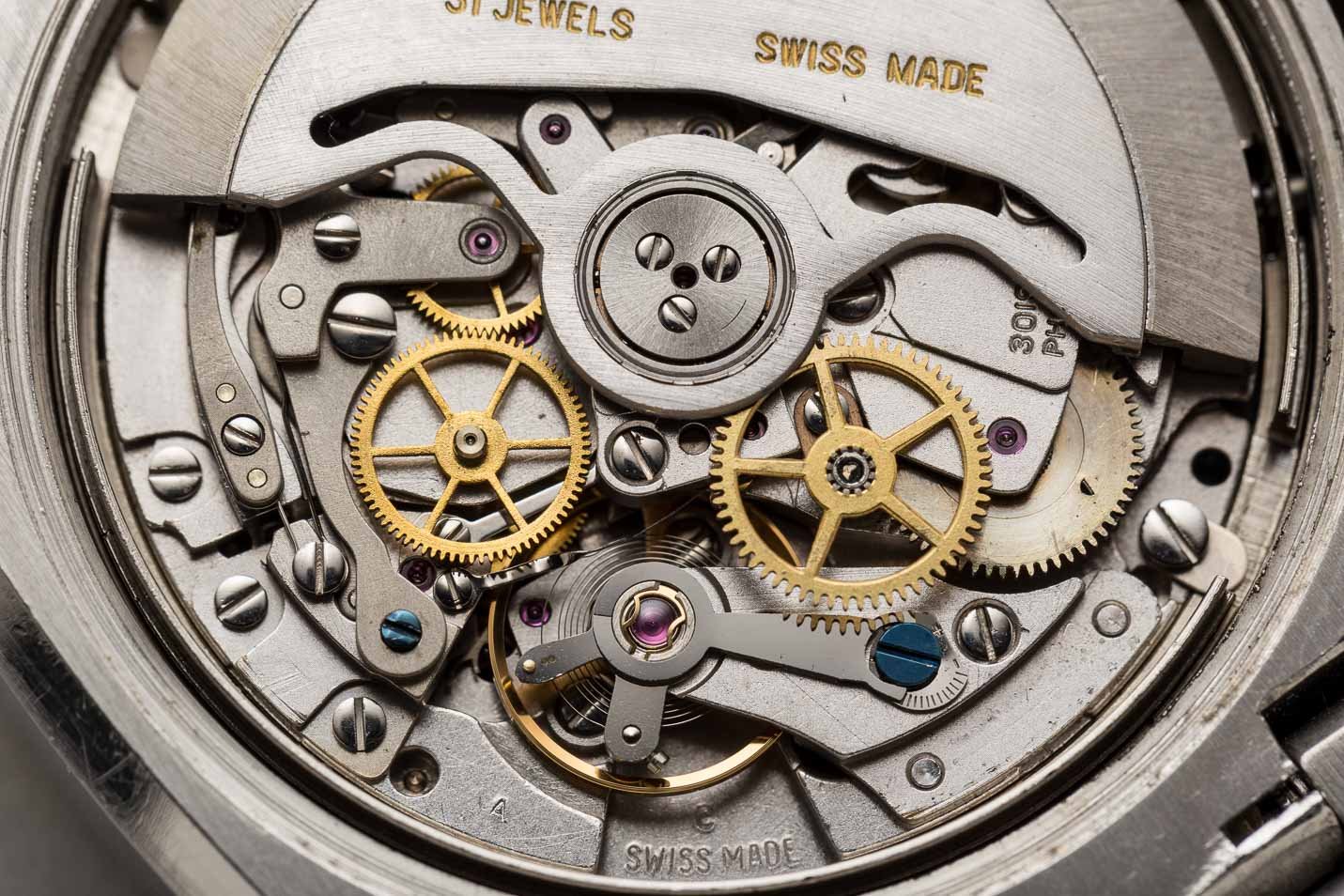Buying Guide: The Best Zenith Watches From The 1970s
We like to talk about vintage watches a lot within the Fratello team. While the daily routine is largely focused on the most recent developments in the world of watches, the most fun for many of us lies in the world of vintage watches. It’s a world full of history, remarkable watches, incredible stories, and quirky details. It inspired us to come up with a series of articles focusing on the best watches per decade from a select group of brands. Some of them priceless, some of them still affordable. In this installment, we will take a look at the best Zenith watches from the 1970s.
In the 1960s, we witnessed developments that challenged the status quo of watch design forever. The sheer amount of watches that pushed the visual boundaries of what was known and accepted was enormous. On top of that, we also saw great technical developments with the race to produce the first automatic chronograph as the most significant of the decade. The 1970s took it to a whole new level. When it comes to watch design, the seventies can only be described one way: no holds barred! The number of extravagant watches is countless. The quest for new shapes, the introduction of explosive colors, and the introduction of the automatic chronograph movement marked a wild time in the watch industry. It was a time that gave us some of the best collectible vintage watches ever.
Zenith in the 1970s
There is no denying that the defining moment for Zenith in the 1960s was the introduction of their famous El Primero movement in 1969. As a result, it is no surprise that many of the new introductions in the 1970s featured El Primero movements. While not every product line the brand produced featured El Primero movements, to begin with, Zenith gradually released more watches with their famous movements. It’s why Zenith watches from the 1970s are great pieces to look into if you’re looking for a great vintage piece because of their legendary movement.
Additionally, the brand excelled at design. When you look at the designs of the Le Locle brand in the 1970s, you can feel the experimental urges of the design team sparking a string of cool watches. Looking at the ’70s, the brand released new generations of some of the lines already in the collection in the 1960s, like the Defy and the trio of El Primero models that were introduced in 1969. On top of that, the brand combined new shapes, extravagant dials, and interesting movements to come up with some amazing results. Unfortunately, the production of Zenith’s mechanical watches was halted in 1975 due to the quartz revolution. The good thing is that the brand did release some remarkable models in those five years. So let’s take a look at some of Zenith’s best from the 1970s.
The entry-point — Zenith El Primero “Big Blue” ref. 01.0200.415
The first pick for this list is the Zenith El Primero “Big Blue.” It’s one of those watches you either love or hate. There really is nothing in between…it seems. I must say when I lined up the watches for this list, I wasn’t a fan. But when I looked at the pictures that the guys at Shuck The Oyster from Berlin made, I did change my opinion. Both the overall shape and the details of this watch are intriguing. The first thing that obviously stands out is the TV screen shape of the case. It’s the reason the watch was given the nickname “Fernseher,” the German word for television. But Zenith collectors have also nicknamed it “Big Blue,” which makes it easier to talk about for non-German speaking people.
This Zenith El Primero “Big Blue” was introduced in 1972, and the brand produced 4,950 pieces until 1978. Then, Zenith produced an additional 50 pieces with a black dial in 1978 to conclude the model’s production. On top of that, these 50 pieces with a black dial were the last Zenith El Primero watches from the 1970s. As I explained last week, I have a soft spot for TV screen watches—the famous Speedmaster TV Dial ref. ST176.0014 and the Heuer Silverstone I picked for last week’s Heuer list are great examples of the shape working amazingly well. The “Big Blue” features a 40.5×43.5mm case, so its size is very much in line with today’s standards. With a little over 14mm thickness, the “Big Blue” is definitely a watch that stands out on your wrist.
A combination of standout elements
On the right side of the case, you will find large chronograph pushers that cover almost the entire side of the case. They look more like crown guards than pushers, but it’s a cool design feature. The big eye-catcher next to the case is the dial. The watch features a deeply recessed blue dial that really draws you in. The dial features three sub-dials framed in a contrasting lighter color which makes them easy to read. The sloped inner bezel features a tachymeter scale, and the date aperture is tucked away in the right bottom corner of the case. It’s a quirky detail. Although it is in line with the minute markers on the dial, seeing the date slightly tilted on a rectangular watch feels counterintuitive. The sleek hands match the dial design perfectly as they make their way across the dial.
Inside the case, you will find the automatic El Primero Calibre 3019 PHC. The movement operates at 36,000vph, features 31 jewels and a power reserve of 50 hours. The watch was delivered on two bracelets. The first releases feature the massive integrated bracelet produced by Chatelain. After Chatelain went bankrupt, Zenith used NSA integrated bracelets. The used bracelets taper from 30mm down to 18mm with a signed double-fold clasp. The watch pictured features the first generation bracelet, and it gives the watch an awesome look. Finding a Zenith El Primero “Big Blue” is not that difficult. Prices have gone up substantially over the years, though, as more and more collectors recognize its iconic value. Expect to pay roughly between 3,5K – 5K depending on the condition. That will get you a watch that embodies the 1970s.
My Choice — Zenith Sub Sea ref. A3630
My pick for this list is the Zenith Sub Sea A3630 that was actually released in the late 1960s. While Zenith introduced the Mk I in the late sixties, the Mk 2 models were released with an updated movement in the early seventies. It’s a classy diver that looks amazing and is quite rare as it wasn’t a big commercial success like so many of Zenith’s diving watches back in the day. The reason I love this watch is because of its clean dial design. I have a soft spot for dials that feature a dark inner color and a white outer ring that holds the 60-minute track. This watch reminded me of the Omega Automatic Seamaster 60 featured in the best Omega watches from the 1960s. Both have a tremendous amount of charm.
This A3630 comes with a comfortable 39mm case and the iconic Gay Frères bracelet, giving it a smart and crisp look even today. The combination of the black and white dial with the black bezel with steel numerals makes the watch for me. There is also a lot of discussion on parts if you go and search the A3630 online. It’s mainly because most pieces have been serviced over time and needed new parts that were not always easy to get. The most debated elements are the hands. Collectors believe Zenith delivered the watch with three different styles. The first is the steel broad arrow hands filled with lume you see pictured — with the seconds hand filled with orange lume. The second is black broad arrow hands filled with lume, and the third is a set of slim steel hands filled with lume.
Finding an original
Zenith also produced the watch with two different crowns. On top of that, the watch is supposed to have a 20mm Gay Frères ladder bracelet with a diving extension rather than the 18mm ladder bracelet you often find on these models. The watch is water-resistant to 120 meters. Inside the 39mm case, Zenith used multiple movements. The Mk1 series used the automatic Caliber 2542PC, and the Mk2 series used the automatic Caliber 2552PC and some very late models Caliber 2562PC. The Caliber 2552PC was used most for the Mk2, and it operates at 21,600vph, has 23 jewels, a date function, and a power reserve of 46 hours. The date aperture is tucked away between 4 and 5 o’clock and is the only element that breaks up the immaculate looks of the dial. I love that there are no words on the bottom half of it.
Overall I love the look of the Zenith A3630. Five centuries after it was introduced, it still looks crisp, and with its size, it could easily be a watch that you wear daily. But that would require you to find one in good condition. And as these pieces are rare and often parts have been changed, finding one in original and great condition could take some time. Besides replacement parts, one of the things you see often is fading of the bezel resulting in a so-called ghost bezel. It’s something that some people love, while others prefer a non-faded bezel. A quick check learns that there are pieces on offer on the different platforms that go for roughly 3K–5K. Compared to other Zenith vintage pieces, that’s a bargain.
Money is no object #1 — Zenith El Primero ref. A3817
In 1971 Zenith released two new versions of the El Primero A384 that introduced new dial colors. The first of the two is the Zenith El Primero A3817. It combines the case of the A384 with the dial of the A386. The results are quite stunning. Before I started writing this article, I had the chance to try out the Zenith Chronomaster Revival El Primero 3817, released in May 2021. It’s a modern re-issue of the original from the seventies. Honestly, I was never too fond of seeing the A386 dial in an A384. Overall I’m not much of a purist in that sense, but when it comes to the original Zenith El Primero models, I am. At least, that is what I thought. But I have to admit I fell in love with the watch.
The Zenith El Primero A3817 is characterized by its 37mm tonneau-shaped case. The case shape is simple but features some great sharp lines. It serves as the perfect canvas for the dial to shine. The sharp lines are enhanced by clever finishing. It’s a combination of brushed and polished finishing with the radial finish of the face of the watch as the most eye-catching. Not only does it look very nice, but it also further enhances the impact of the dial. The white dial is characterized by its colorful registers in blue and grey tones. This iconic design was made popular with the A386 but turned out to work very well here also.
It all in the details
Additionally, I love the details of the dial that make this such a winner. The white dial has a contrasting black inner bezel with the tachymeter scale and pulsometer scale from 12-3 o’ clock. The subtle “shark tooth” minute track is different from the A386 dial. Another difference with the A386 dial is the blue color used for the hand and numerals in the register at 9 o’clock. I love the applied, faceted silver hour markers in combination with the matchstick handset. They are filled with tritium lume that ages to a dark yellowish color. Finally, there is the date aperture that is neatly tucked away between 4 and 5 o’clock. Obviously, there is the bright red central chronograph hand for a hint of extra color. There is so much detail in this dial; it’s incredible. And the best thing is, it looks immaculate and fresh.
Inside the case, you will find the automatic El Primero 3019 PHC chronograph movement that also powers the “Big Blue’. It’s the first generation El Primero movement you will find in many early El Primero models. Only 1,000 pieces were produced of the original El Primero A3817. Because of the low production number and the design combination of two original El Primero models, the A3817 is very popular amongst collectors. Especially if you can find one on the original Gay Frères ladder bracelet. Prices for an El Primero A3817 are generally between 15K-20K, but models in great condition can go for double that in auctions. That’s a lot of money for a unique watch.
Money is no object #2 — Zenith El Primero ref. A3818 “Cover Girl”
I usually do not pick two of the same models for a list. But for this one, I’m making an exception. Mainly because both the El Primero A3817 and A3818 have become industry icons, you can’t mention the one without the other. Additionally, I love both of these watches, so it makes it easier to mention them both. The Zenith El Primero A3818 “Cover Girl” was also introduced in 1971, like the A3817. Just like that watch, Zenith also produced only 1,000 pieces of the “Cover Girl.” The watch got its nickname because it is on the cover of the famous book Zenith: Swiss Watch Manufacture Since 1865 by Manfred Rössler. The English version of that 2008 book goes for crazy money nowadays. But if you understand German, look on the German Amazon to find the original German version of the book for a reasonable price.
The reason the book made it to the cover of the book is actually quite simple. Rössler has a love for blue dials. And the regal blue dial of the A3818 is an absolute beauty. The dial has a nice vertically striped finish, while the three registers have a circular finish. As a result of the different patterns and the overall metallic blue metallic color, the dial looks brilliant. In bright lights conditions, it changes color constantly, making it a joy to watch. Compared to the original A385, A385, and the A3817, this is also the first model in the range with a dial in one color. It makes the overall feel a bit easier on the eye without losing its brilliance. There is a nice hint of color in the red central chronograph hand that contrasts really nicely with the blue dial.
Unique in color and execution
The dial looks very much like the one used for the A3817. But there is another difference. The A3818 does not feature the applied hour markers like its sibling. Instead, Zenith chose to use painted lume markers rather than the faceted silver hour markers. It’s a detail that does not stand out at first, but it makes the watch look a bit “sportier,” for lack of a better word. Technically, the watch is the same as the previously discussed A3817. So it uses the same 37mm tonneau-shaped case that holds the automatic El Primero Calibre 3019 PHC. In addition, the watch came with a leather strap or the iconic ladder bracelet. You can probably guess which one I prefer. But over time, not many of the Gay Frères bracelets survived, unfortunately. But I must add that on a light brown leather strap, the watch looks amazing as well.
Its iconic status has made the Zenith El Primero A3818 one of the most sought-after vintage Zenith watches. Combined with the low production number, it’s the reason these hardly show up for sale. In early 2020 Revolution Magazine and Zenith collaborated on a re-issue of the A3818 in a limited production run of 100 pieces. The watch was met with a lot of praise, and it currently goes for double its initial 8K list price. It perfectly shows the iconic status of the “Cover Girl.” As mentioned finding an original is tough. Up until a couple of years ago, they would go for around 15K. With the release of the re-issue and the renewed attention, the current price is probably closer to 20K and a lot more for a piece in original condition. But that will buy you what many consider the “Holy Grail” Zenith.
Money is no object #3 — Zenith Espada El Primero ref. A7817
Speaking of Zenith “Holy Grails.” The Zenith Espada El Primero A7817 is the ultimate for the El Primero line-up from the 1970s. The Espada was the world’s first automatic chronograph with a full calendar and a moon phase. That fact alone makes this an iconic timepiece in the watch world. However, the watch also features a case and bracelet on top of the technical mastery that can only be described as very 1970s. It’s also where two product lines fused could make it a bit confusing. The El Primero line is essentially based on the iconic movement and features a series of different designs. At the same time, Zenith also produced the Defy line that was more focused on design.
In my article about the best Zenith watches from the 1960s, I discussed the first model, Defy, from the late 1960s. This octagonal model, also known as the “Urdefy,” has to share the stage with the Defy 768x series. The Defy 768x models are characterized by their sportier look and remarkable steel bracelet. It very much fits the mold of the ’70s luxury steel sports watches. But when Zenith decided to create Defy models with chronograph movements, they lost their Defy name and became part of the El Primero family. From a marketing perspective, this makes sense as the El Primero name made headlines in the late ’60s, early ’70s. But from a portfolio standpoint, it can be a bit confusing.
Two different versions
For a long time, it was believed that the Espada was produced in a single run of 300 pieces in 1972. However, after extensive research from several Zenith collectors with help from Zenith, they found out that there was actually a second production run of 500 pieces produced from 1973–75 with a different ref. 01.0040.418. If you are interested, I suggest that you read the thread about the Espada on Watchuseek because it is a great piece of research. The biggest differences are a different case, different logos on the dial and crown, and a different case back. But it comes as no surprise that during services, dials, hands, and crowns were often replaced. This resulted in watches from the first series equipped with parts from the second series. A fun fact is that the same watch was also produced as the Movado Astronic.
Inside the 38×44mm case, you will find the El Primero Calibre 3019 PHF. It is the same base chronograph movement as used for the other early El Primero models. But the PHF version adds a day indication at 2 o’clock and a month indication at 4 o’clock. On top of that, the usual 12-hour counter at 6 o’clock is swapped for the moon phase indication. What I love is that the dial design immediately stands out with its special features. Having said that, the dial never looks cluttered. The only element that is an acquired taste is the stainless steel bracelet. The good thing is that these did survive the test of time better than the ladder bracelets. Finding an Espada is not easy. When you do, expect to pay roughly between 6K–10K, depending on the condition. Not a lot of money, considering its unique status.
Final Thoughts
There you have it. A list of five remarkable Zenith watches from the 1970s. As always, there are plenty more watches that could have been on this list. I, unfortunately, cannot cover every great watch from the brand. However, if you look at these five watches, Zenith created some amazing watches in the seventies that stood out in design and technical development.
As with all the other brands, it is important to do your homework. The world of vintage Zenith watches also suffers from fake or Franken pieces. Next to that, you have to keep in mind that many vintage pieces were serviced over the decades, and parts have been replaced. That’s why it good to do some required reading.
A lot of crucial historical info has been documented, though. Two nice books to start with are Zenith — Swiss Watch Manufacture Since 1865 and El Primero – Der Chronograph (in German), both written by Manfred Rössler. On top of that, there is plenty of information available to read online. Jeff Stein’s On The Dash has a great cheat sheet for all the El Primero models with some nice links. Additionally, the Zenith forum at Watchuseek is also a great place to start. Contacting vintage experts will also help out greatly. It’s a great way to learn more about a watch and get to know some amazing people along the way.
Next week, we will look at some of the best watches from Longines from the 1970s. In the meantime, let us know in the comment section what your favorite Zenith from the 1970s is.

